How does it do it i want to know the whole process
 Is it beacuse of the movement of the current.
Lets say initially at time=0 voltage at v1 was 5 volt so voltage at g was also 5 so this voltage gets amplified negatively and produces lets assume -1000v now due to voltage difference between v1 and Vo current will flow from v1 to Vo so there will be voltage drop across R1 so the point g will have lower voltage than v1 but higher than Vo so the new voltage at g will again get amplified but this time the Vo produced will be lower, again this Vo draws current from V1 and agains there is new potential drop at g and this goes on. Is my understanding right if wrong please explain and also explain why the op amp always try to maintain same voltage.
Is it beacuse of the movement of the current.
Lets say initially at time=0 voltage at v1 was 5 volt so voltage at g was also 5 so this voltage gets amplified negatively and produces lets assume -1000v now due to voltage difference between v1 and Vo current will flow from v1 to Vo so there will be voltage drop across R1 so the point g will have lower voltage than v1 but higher than Vo so the new voltage at g will again get amplified but this time the Vo produced will be lower, again this Vo draws current from V1 and agains there is new potential drop at g and this goes on. Is my understanding right if wrong please explain and also explain why the op amp always try to maintain same voltage.
-
1The op amp won't produce -1000V of course, but something close to the negative supply voltage (e.g. -15V). It may be easier to understand if you think of the voltage dropping rapidly towards -15V instead of jumping instantaneously. So the output will keep dropping until the negative input is 0 (actually just very close to 0), and then stop there. If you're unlucky (i.e. badly compensated), it will overshoot 0 and you'll end up with oscillation. – Ken Shirriff Dec 19 '16 at 01:38
4 Answers
Roughly speaking, you're describing the effect of negative feedback, for which the intuition is that it brings/forces the system to an equilibrium point.
The reason why the two voltages at the input terminals are essentially the same (putting aside several practical factors) is in part the negative feedback, but mainly the fact that the gain of the amplifier is extremely high.
The simplified/ideal model of the op-amp describes it as having infinite gain. So, if the output is not driven to saturation, then a finite output voltage must mean a zero input voltage (i.e., zero difference between the two input terminals). In reality, the gain is not infinite; it is just extremely high; thus, the difference between the input terminals is not really zero; it is just extremely close to zero.
The negative feedback plays the role of maintaining the system inside its non-saturating / linear behaviour, which combined with the above makes the input differential voltage essentially equal to zero.
- 2,029
- 2
- 20
- 37
-
What about the rest of the process is it right i.e how the feedack feeds back voltage? – Dec 19 '16 at 02:40
-
More or less, yes. It is incomplete, but as a way to visualize it, I think it's fine. See Ken Shirrif comment to your initial message; it refines your interpretation quite nicely. BTW, the way you explain it, it may sound that the behavior would be oscillation around the equilibrium point; the way Ken explains it reflects why (in principle) it doesn't. I guess in your next electronic circuits course you'll study the why's or why-not's the op-amp would oscillate. – Cal-linux Dec 19 '16 at 05:47
The whole process of an OpAmp is to make the differential input voltage=0V. If there is any significant voltage different beyond offset voltage, then the output must be saturated. Vout drives the Vin-in until the Vdiff input=0.
- 1
- 3
- 54
- 182
A detailed example of "how the opamp finds its bias point" is given in the following link:
I understand it as follows:
If V1 is positive :
> Assume, output of OPAMP is at any arbitrary voltage above zero before applying 'V1
> Apply positive voltage at V1
> V becomes positive
> since +terminal of OPAMP is grounded, and -terminal is at +ve potential than the +terminal, output of OPAMP begins to go towards -VCC.
> However, as output starts dropping going towards -VCC, voltage divider created by Rf and R1, causes V to start dropping. Current will flow between V1 and Vo depending upon which node is at the higher potential.
Since increase in potential at V (w.r.t. +terminal) will cause decrease in output (and vice-versa) it is called as 'negative feedback'.
Note1: Voltages at various nodes get created because current 'flows' from higher potential to lower potential. If there is no current flow, there will not be any potential difference.
Note2: OPAMP does not try to maintain the same voltage, it simply amplifies the potential difference between the -ve and +ve terminal by a million times (or with whatever open loop gain it has). The reason why output of inverting OPAMP amplifier remains at a particular level for a given input is because of the Rf/R1 connections. This arrangement 'prevents' the OPAMP output going towards +VCC or -VCC arbitrarily for the (limited) value(s) of V1.
- 74
- 3